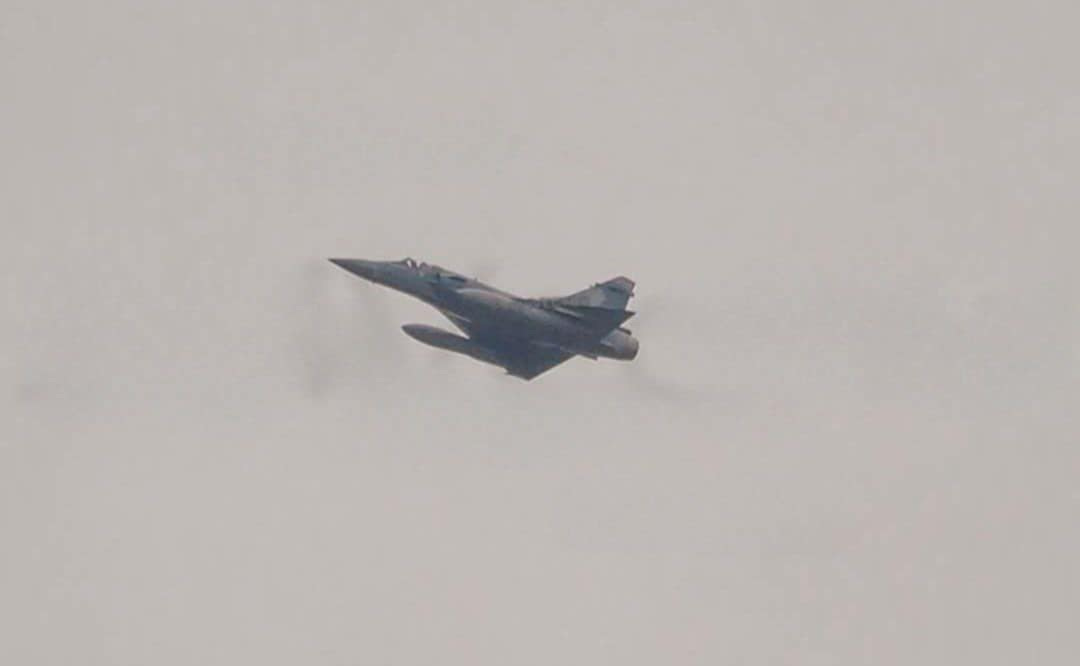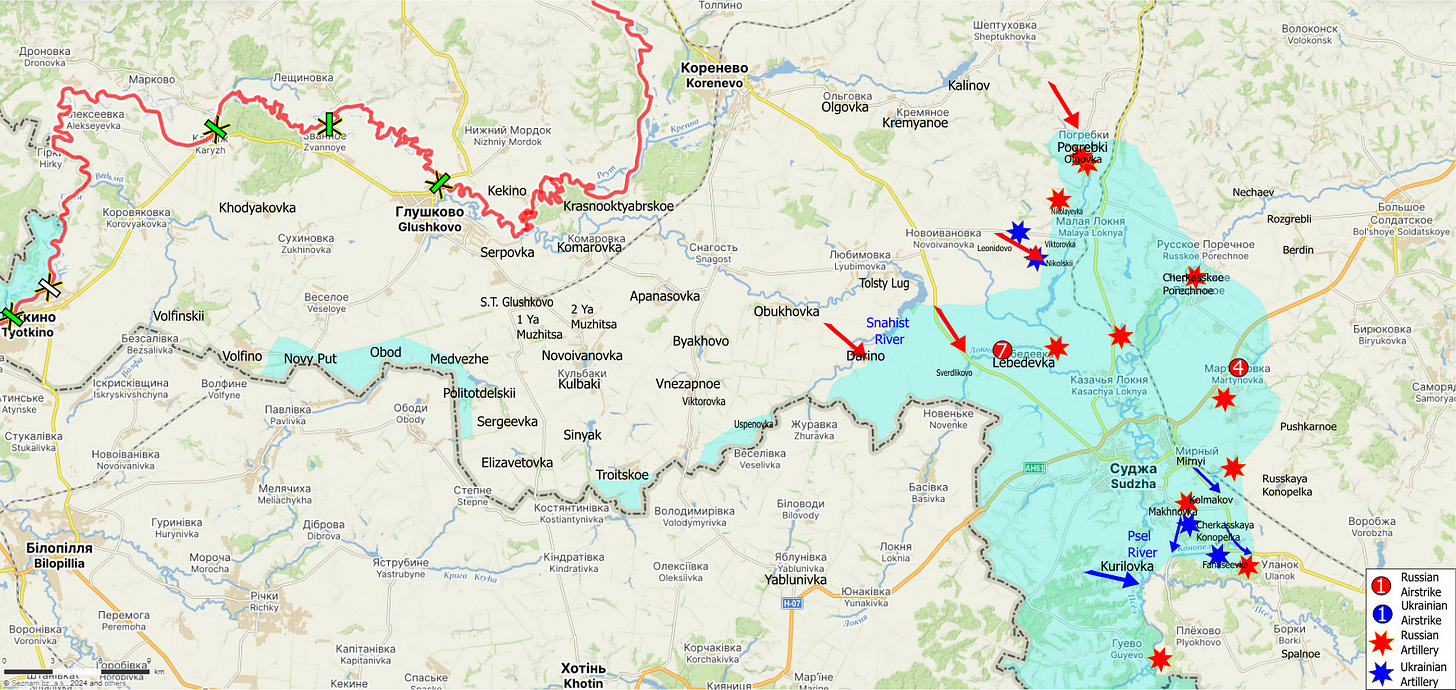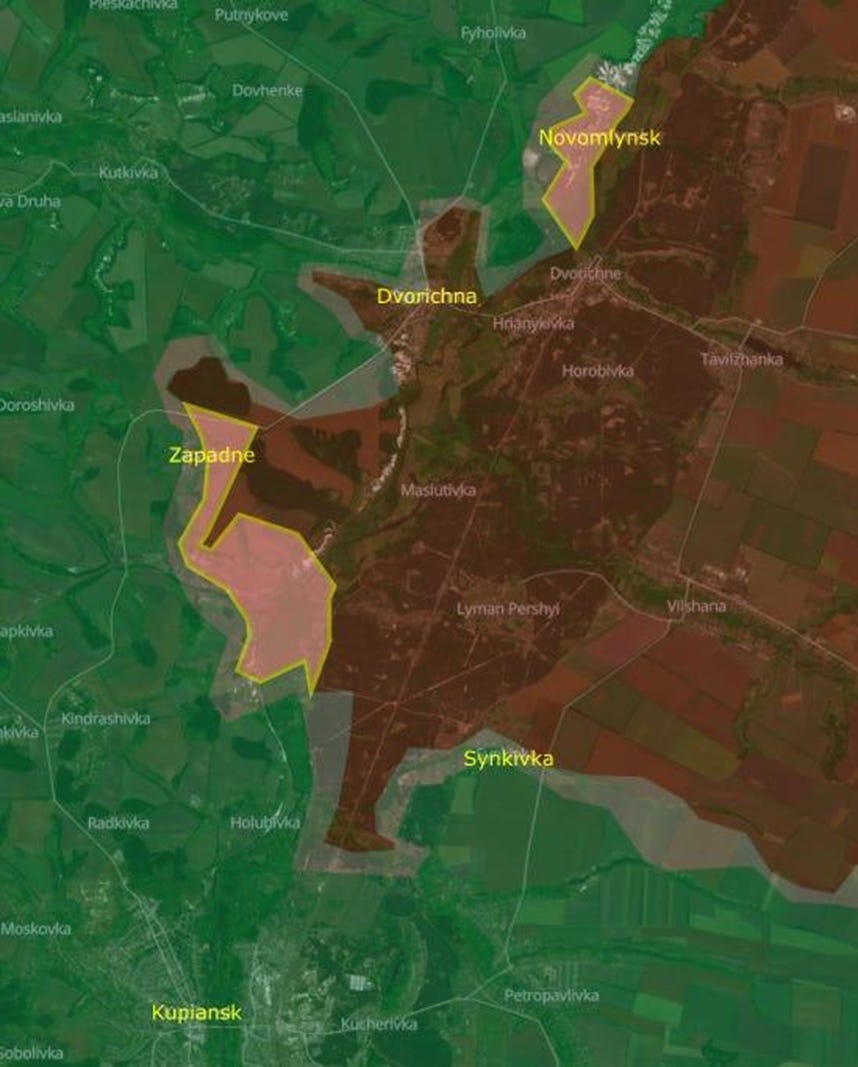Hello everybody!
This was an ‘exciting’ week: while on most of the battlefields in south-eastern Ukraine, the Russians are still making their grinding advances, and almost simultaneously with Kyiv’s announcement of a ‘re-organisation’ of the ZSU, to include an (operational, not only nominal/administrative) corps structure, France has delivered the first few Mirage 2000s. Moreover, The Netherlands sent its last batch of F-16s. Of course, by night, both parties in this war also continued targeting each other’s energy infrastructure with UAVs…

Taking place about a week since the latest loss of an Ukrainian Su-27 - the jet was shot down by a long-range R-37M missile fired by an Su-30SM-2 of the Russian Naval Aviation, while attempting to approach the frontline in order to deliver a ground attack, and its pilot was killed - this is a, potentially, ‘good’ development. Unsurprisingly, there are already lots of guesses how and where is the PSU going to hit the Russians with them. As usually, I’m much more cautious. Firstly, it’s going to take some time for the Ukrainian air force to ‘integrate’ the type: for its pilots to explain to their superiors (all provided the later might listen) what the jet can do, and what not. (Hopefully, this time, without any of them being shot down and killed, too…)
That said - and always provided the big-mouthed bankier in the Élysée might stand to his promise - the primary ‘advantage’ of Mirage 2000s vis-a-vis F-16s is going to be to lessen Ukraine’s dependence on the Orange Head and his gangs of Oligarchs on the other side of the Big Pond. Ideally, Mirages arrived really equipped with SCALP-EG stand-off precision guided weapons: the French version of the Storm Shadow. And, contrary to the Americans, the French seem to be less reluctant with granting permission for deployment of such weapons on the Russian territory - while always at least as keen to advertise their high-tech, as Americans.
(Even more ‘ideal’ would have been if the French went as far as to upgrade these Mirage 2000Fs through installing compatibility with Meteor long-range air-to-air missiles. Even if the radar system of that jet wouldn’t enable the full exploitation of that weapon’s engagement envelope, through some ‘clever combination’ of ground-based radars and two Mirages - as one can expect from Ukrainians - the weapon could come as an extremely nasty surprise for ‘Pudding’s Falcons’… but, sigh, that’s probably within realms of wishful thinking. Better to wait and see what might the PSU do with its ‘new toys’…)
***
Before I forget: many thanks for all the comments in reaction to our explanation of the ZSU’s (planned) reform, but, and especially, heartfelt thanks to ZSU-troops that have sent messages confirming conclusions about Syrsky’s command style, described in the Part 3 of the last week’s Weekly.
Please be sure, both Don and me understand your frustrations, and are feeling (and strongly at that) with you. That’s why we’re going to do our best to continue in exactly the same fashion.
***
Kursk
A month ago, Ukraine made a 5 km attack into Berdin. This attack made little sense as it was isolated from any other terrain controlled by Ukraine, making it difficult to supply, reinforce and evacuate wounded from that position. It would also increase Ukraine’s bulge deep into Russia, even as Russia was trying to cut off Ukraine’s penetration by driving into both flanks of their bulge.
Last week, Ukraine conducted another attack, this time further south near Makhnovka and Cherkasskaya Konopelka. This attack made a lot more sense, since there was supporting terrain in between the ground seized and the ground controlled by Ukraine, and it widened the width of Ukraine’s flank in this sector. Russia had been pushing hard in this sector and suffered heavy losses in the process, including over 400 casualties in just one day. Ukraine’s 36th Regiment had conducted a recent counter attack in Makhnovka and gained about 800 meters. Having expended their forces in a failed all-out attack, the survivors had a level of disorganization that made them vulnerable to a counter attack.
This 5 km attack reversed the progress Russia made in this sector over the last six weeks. They also pushed Russia out of its crossing of the Psel River just south of Kurilovka. It cost Ukraine at least six vehicles destroyed and 21 damaged.
Ukrainian equipment northeast of Makhnovka is attacked and Martynovka was hit by airstrikes.
On the western side of the bulge, the North Koreans resumed their attacks towards Nikolskii. Beginning at midnight, they conducted attacks in waves for 16 hours, mostly on foot, sometimes transported by golf carts. When they collected in the treelines they were hit by HE and DPICM artillery. In some of the footage you can see the DPICM shell streak followed by the cluster bombs impacting the ground two seconds later.
Constantine’s friends are fighting in Kursk and they sent reports. “North Korean troops are attacking Ukrainian positions in Kursk again right now using infantry groups of ~20. Two groups destroyed already, more coming.”
“Thermal drones you donated to our orgs are saving lives. I can’t post the videos yet, but NK troops are trying to use thermal capes but it’s not helping them.” (In other videos, thermal capes blocked all heat signatures, which also makes them stand out). When the attacks finally stopped, none of the North Korean attacks gained any territory.
20 rockets from helicopters impacted Olgovka, just south of Pogrebki, and spread across a kilometer. It was attacked again the next day.
One Russian’s experience is based on anxiety of friendly and enemy drones, uncertainty over Ukrainian actions and resentment of North Koreans that sometimes fire on them accidentally.
Another Russian command post was reportedly hit by GMLRS.
***
Kharkiv
The Russians intercept Vampire drones on resupply missions in Vovchansk.
***
Kupiansk
North of Kupiansk, Russia crossed the Oskil river in (no less than) three places, meanwhile, and is diligently expanding those bridgeheads. This effort began ten weeks ago - while we’ve explained ‘that’ with ‘Russians and their bridgeheads’ at least a dozen of times so far. Still, the Glavcom is not reacting: certainly ‘has more important things to do’ but to pay attention about a problem on time…
BTW, as reported back in November, the one time the ZSU did react, there was ‘that one’ successful counter attack that eliminated the bridgehead at Novomlynsk. But, that operation was undertaken on the initiative of one of local commanders, not that of Glavcom, and thus was something Kyiv didn’t like very much. Therefore, ever since, nothing similar is undertaken. What a surprise then, the Russians have re-established that bridgehead and expanded their other crossings…
Sure, past experiences are making sure that the Russian expansion will slowly increase over time, with always the same result: Ukraine will need to send more units over time to contain the expansion when they could have sent enough units earlier to prevent it from growing in the first place…But, why should anybody at the top of the Ukrainian Armed Forces seriously study past experiences, and draw lessons from them?
There’s no time for that, you know…
‘Miraculously’, south of Kupiansk, the ZSU has found enough units to prevent further expansion, at least for the last couple of weeks. Of course, as usually, it was ‘one crisis = one battalion’, which is making it clear who was the culprit of that action: a battalion of the Achilles Regiment deployed in the Kupiansk region destroyed six vehicles around Pishchane.
***
(…to be continued…)






Thanks for it Tom.
As the VSRF is de-mechanized, are the bridgeheads a lesser threat? They don't have explotation forces to introduce an OMG in the rear with them.
Maybe a consecuence of this new style of war?
"Firstly, it’s going to take some time for the Ukrainian air force to ‘integrate’ the type: for its pilots to explain to their superiors (all provided the later might listen) what the jet can do, and what not. (Hopefully, this time, without any of them being shot down and killed, too…)"
France has been training Ukr aviators to fly Mirages. The Dutch and others have trained Ukr aviators to fly Falcons. Why is it up to the newly trained aviators of NATO airframes to "educate" their superiors on the effective USE of NATO air assets in combat air ops. Why weren't those "superiors" also not trained/indoctrinated in Western airops using NATO combat air assets by those various nations who have been training their Ukr aviators in flying/fighting those combat aircraft?
Wasted opportunity: too bad that the West hasn't modified combat aircraft destined for Ukraine to employ a counterpart to the Russian R-37M.